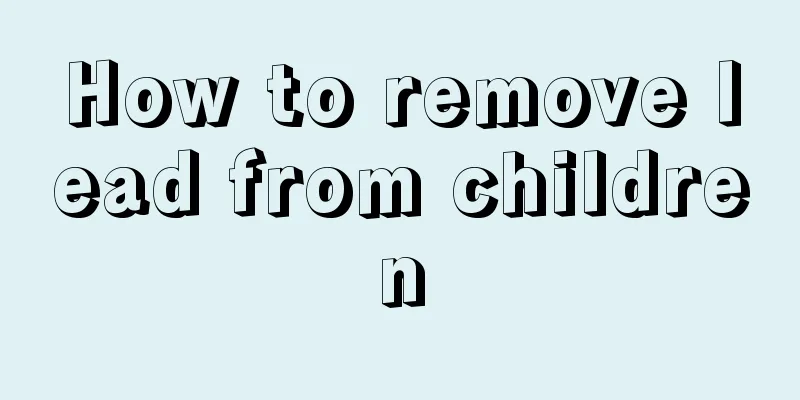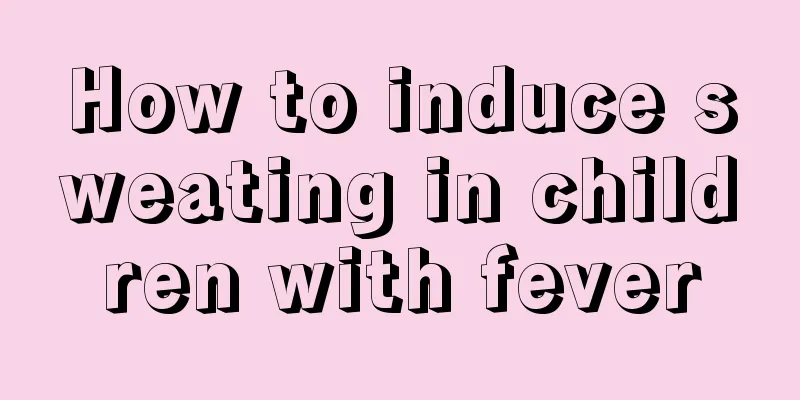How to remove lead from children

|
Lead is very harmful to human health. Lead poisoning not only exists in the air, but may also be hidden in some older houses, garden land, etc. Sometimes it may be hidden in children's toys, which can easily lead to lead poisoning in children. If the lead content in a child's body is too high, it will seriously affect the child's physical and mental health. In daily life, how can we help children remove lead? How to remove lead from children? 1. Foods rich in vitamin C Vitamin C combines with lead to form a substance that is insoluble in water and is then excreted from the body with feces. Vitamin C is widely present in fruits, vegetables and the leaves of some plants. Sour fruits such as oranges, lemons, pomegranates, hawthorns, especially sour dates, are the richest in them. Apples, strawberries, fresh peppers, cabbage, garlic sprouts, snow vegetable, tomatoes, cauliflower, etc. also contain vitamin C. 2. Foods rich in protein and iron Protein and iron can replace lead and bind to organic matter in tissues, accelerating lead metabolism. Foods containing high-quality protein include eggs, milk and lean meat. Green leafy vegetables and fruits rich in iron include spinach, celery, rapeseed, radish tops, amaranth, shepherd's purse, tomatoes, citrus, peaches, plums, apricots, pineapple and red dates. Where does the lead in children's bodies come from? 1. Soil Under normal circumstances, the lead content in soil is 10-50 mg/kg, but the lead content in soil in urban areas may be hundreds or even thousands of times higher. In addition to children directly touching the soil with their hands, the soil stuck to the soles of their shoes can also easily be brought into the room. 2. Dust on the indoor floor Airborne lead dust that settles on floors or carpets is also an important source of lead exposure for children. 3. Water pipes in old houses Although the lead content in tap water is not high, its bioavailability is often higher than that of lead in food. Lead contamination is usually more likely to occur in tap water pipes in old homes. 4. Home decoration materials The main components of paints, coatings and wallpapers in home decoration materials are lead salts, cadmium, chromium oxide, lead yellow, lead white, red lead, etc. Many decorative materials such as wood coatings and interior wall coatings contain lead. Some families like to decorate their rooms, especially children's rooms, in colorful colors, which can more easily cause lead pollution in the room air. 5. Daily necessities Cigarette smoke, cosmetics, lead-containing containers, tableware made of colored glaze ceramics, milk bottles and water cups printed with various bright patterns, etc. 6. Jewelry Especially jewelry with painted surfaces, such as necklaces, jewelry, etc., children like to play with them and even put them in their mouths. |
<<: The site for intramuscular injection in children should be selected
>>: Causes and treatment of bruxism in children
Recommend
How to bask in the sun for a full-moon baby
It is best for a one-month-old baby to go out and...
What is the correct way to take Icoxin?
We all know that every child has a great demand f...
What to do if your child has a hoarse throat
If a child has a hoarse throat, be alert to wheth...
Is it good to use enema for children’s constipation?
Constipation is a disease that generally occurs i...
Symptoms of Yin deficiency in babies
With the increase of social pressure, many people...
What should I do if my one-year-old child has diarrhea?
If a child has diarrhea, he or she must go to the...
What are the precautions for children to supplement trace elements? What are the symptoms of children lacking trace elements?
A child's lack of trace elements may have a s...
Understand the causes and solutions of eye mucus in children's eyes
Everyone's eyes will produce a certain amount...
What is the dietary treatment for children's cough?
Every child will always encounter some diseases i...
What should children with precocious puberty pay attention to in their diet?
Most of the precocious puberty in children is cau...
What is the cause of a child's fever when teething?
It is a normal physiological phenomenon for babie...
Can children eat broad beans?
Because there is a clinical disease called favism...
Why does a child clench his teeth when sleeping?
Careful parents may find that their children grin...
What to do if the back of the baby's head is uneven
The soft and pulsating part of the baby's hea...
Why do children toss and turn in their sleep?
If a child tosses and turns in his sleep, it may ...









